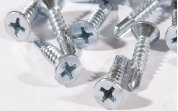Effective Bracing Techniques for Steel Stud Walls in Construction Projects
Understanding Steel Stud Wall Bracing Importance and Techniques
Steel stud wall bracing is an integral aspect of modern construction that plays a crucial role in ensuring structural integrity and safety. This technique is particularly popular in commercial and high-rise buildings, where stability and resistance to lateral forces are essential. This article will explore the importance of steel stud wall bracing and the various methods used to achieve it.
Importance of Steel Stud Wall Bracing
Bracing is critical in resisting lateral loads caused by wind or seismic activity. Buildings, particularly those with taller structures, are susceptible to these forces, which can lead to significant structural damage or even collapse if not adequately managed. Steel stud walls, which are lightweight yet strong, provide an effective way to mitigate these risks.
The use of steel studs in construction offers several advantages, including ease of fabrication, fire resistance, and durability. However, without proper bracing, these walls can flex or distort under pressure. Bracing reinforces the overall stability of the wall assembly, ensuring that the building can withstand environmental forces while maintaining its shape and integrity.
Methods of Bracing Steel Stud Walls
There are several methods for bracing steel stud walls, each with its own benefits depending on the design requirements, building codes, and environmental conditions.
steel stud wall bracing

1. Diagonal Bracing This technique involves the installation of diagonal members (typically steel rods or straps) across the wall frame. Diagonal bracing creates a triangular configuration, which effectively distributes lateral loads, enhancing the structural resistance of the wall. This method is particularly effective for low-rise buildings and open interior spaces where maintaining aesthetics is not a primary concern.
2. Shear Panels Shear panels are rigid panels that provide lateral stability to steel stud walls. These can be made from plywood, OSB (oriented strand board), or steel sheet, and are installed parallel or perpendicular to the studs. The panels work by transferring shear forces through their diagonal tension, which helps to prevent swaying during high winds or seismic events. This method is common in both residential and commercial construction.
3. Cross Bracing Similar to diagonal bracing, cross bracing involves creating a grid of diagonal members that form an X shape within the wall frame. This technique can increase the wall’s stiffness and provide excellent resistance to lateral movement. Cross bracing is often used in buildings that require high-performance stability, such as those located in earthquake-prone areas.
4. Moment Frames Moment-resisting frames incorporate specially designed steel connections that allow for rotation at the joint while maintaining stiffness. This method is effective in tall buildings where maintaining flexibility is necessary during strong wind or seismic activity. These frames are engineered to handle significant forces and are commonly seen in high-rise construction.
Conclusion
Steel stud wall bracing is a fundamental technique that enhances the safety and durability of modern structures. By selecting the appropriate bracing method, builders can ensure that their designs meet necessary building codes and withstand various environmental challenges. As the construction industry continues to evolve, innovations and advancements in bracing technologies will likely emerge, further improving the performance of steel stud walls.
In summary, whether through diagonal bracing, shear panels, cross bracing, or moment frames, the importance of steel stud wall bracing cannot be overstated. It provides essential support against lateral forces, ensuring that buildings remain safe, reliable, and capable of withstanding the forces of nature. Properly executed, bracing not only enhances structural performance but also contributes to the overall longevity of the building, making it a vital consideration in the design and construction process.
-
Weatherproof Plastic Expansion Anchors for OutdoorBalitaJun.06,2025
-
Sustainability in the Supply Chain: Eco-Friendly TEK Screws ProductionBalitaJun.06,2025
-
Load-Bearing Capacity of External Insulation FixingsBalitaJun.06,2025
-
Double Head Bolts: Enhancing Efficiency in Industrial MachineryBalitaJun.06,2025
-
Corrosion Resistance in Chipboard Screws: Coatings for Wholesale DurabilityBalitaJun.06,2025
-
Butterfly Toggle Bolts : Enhancing Structural ResilienceBalitaJun.06,2025
